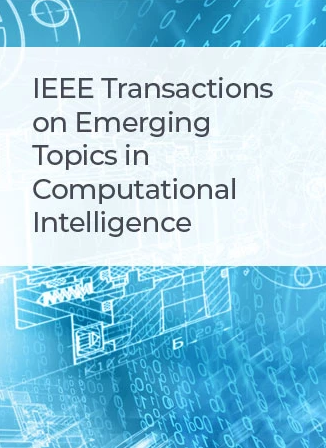Diversity-Induced Bipartite Graph Fusion for Multiview Graph Clustering
IF 5.3
3区 计算机科学
Q1 COMPUTER SCIENCE, ARTIFICIAL INTELLIGENCE
IEEE Transactions on Emerging Topics in Computational Intelligence
Pub Date : 2024-03-14
DOI:10.1109/TETCI.2024.3369316
引用次数: 0
Abstract
Multi-view graph clustering can divide similar objects into the same category through learning the relationship among samples. To improve clustering efficiency, instead of all sample-based graph learning, the bipartite graph learning method can achieve efficient clustering by establishing the graph between data points and a few anchors, so it becomes an important research topic. However, most these bipartite graph-based multi-view clustering approaches focused on consistent information learning among views, ignored the diversity information of each view, which is not conductive to improve clustering precision. To address this issue, a diversity-induced bipartite graph fusion for multiview graph clustering (DiBGF-MGC) is proposed to simultaneously consider the consistency and diversity of multiple views. In our method, the constraint of diversity is achieved via minimizing the diversity of each view and minimizing the inconsistency of diversity in different views. The former ensures the sparse of diversity information, and the later ensures the diversity information is private information of each view. Specifically, we separate the bipartite graph to the consistent part and the divergent part in order to remove the diversity parts while preserving the consistency among multiple views. The consistent parts are used to learn the consensus bipartite graph, which can obtain a clear clustering structure due to eliminating diversity part from original bipartite graph. The diversity part is formulated by intra-view constraint and inter-views inconsistent constraint, which can better distinguish diversity part from original bipartite graph. The consistent learning and diversity learning can be improved iteratively via leveraging the results of the other one. Experiment shows that the proposed DiBGF-MGC method obtains better clustering results than state-of-the-art methods on several benchmark datasets.多视图图形聚类的多样性诱导双方图融合
多视图聚类可以通过学习样本之间的关系将相似对象划分为同一类别。为了提高聚类效率,双元图学习方法取代了所有基于样本的图学习,通过建立数据点与少数锚点之间的图来实现高效聚类,因此成为一个重要的研究课题。然而,这些基于双元图的多视图聚类方法大多侧重于视图间的一致性信息学习,忽略了每个视图的多样性信息,不利于提高聚类精度。针对这一问题,我们提出了一种同时考虑多视图一致性和多样性的多视图聚类的多样性诱导双方图融合方法(DiBGF-MGC)。在我们的方法中,多样性约束是通过最小化每个视图的多样性和最小化不同视图中多样性的不一致性来实现的。前者确保了多样性信息的稀疏性,后者确保了多样性信息是每个视图的私有信息。具体来说,我们将双向图分为一致部分和分歧部分,以去除多样性部分,同时保留多个视图之间的一致性。一致部分用于学习共识双栅格图,由于消除了原始双栅格图中的多样性部分,因此可以获得清晰的聚类结构。多样性部分由视图内约束和视图间不一致约束构成,能更好地将多样性部分从原始双叉图中区分出来。一致性学习和多样性学习可以通过利用另一种学习的结果进行迭代改进。实验表明,在多个基准数据集上,所提出的 DiBGF-MGC 方法比最先进的方法获得了更好的聚类结果。
本文章由计算机程序翻译,如有差异,请以英文原文为准。
求助全文
约1分钟内获得全文
求助全文
来源期刊

IEEE Transactions on Emerging Topics in Computational Intelligence
Mathematics-Control and Optimization
CiteScore
10.30
自引率
7.50%
发文量
147
期刊介绍:
The IEEE Transactions on Emerging Topics in Computational Intelligence (TETCI) publishes original articles on emerging aspects of computational intelligence, including theory, applications, and surveys.
TETCI is an electronics only publication. TETCI publishes six issues per year.
Authors are encouraged to submit manuscripts in any emerging topic in computational intelligence, especially nature-inspired computing topics not covered by other IEEE Computational Intelligence Society journals. A few such illustrative examples are glial cell networks, computational neuroscience, Brain Computer Interface, ambient intelligence, non-fuzzy computing with words, artificial life, cultural learning, artificial endocrine networks, social reasoning, artificial hormone networks, computational intelligence for the IoT and Smart-X technologies.
 求助内容:
求助内容: 应助结果提醒方式:
应助结果提醒方式:


